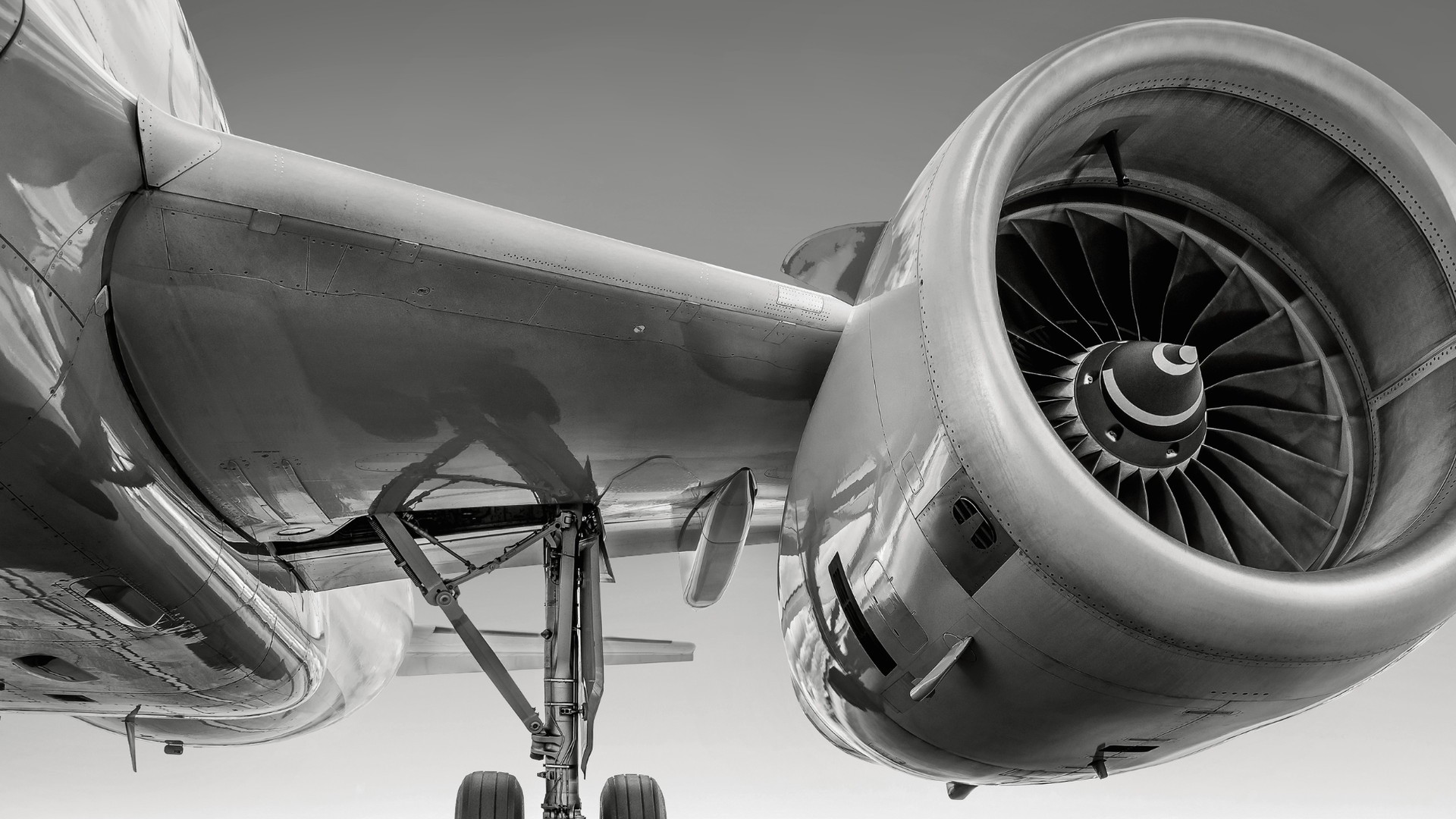

The evolution of jet engines since their inception in 1939 has been significant, yet the fundamental design remains consistent. Dr. Ernst Heinkel's pioneering work led to the first flight of a jet plane, and though the basic components of the engine air intake, compressor, combustor, turbine, and exhaust nozzle are still used today, modern engines benefit from advanced technologies.
Progress in the aerodynamic design of compressors and turbines, coupled with the development of cooling technologies for turbine blades and innovations in material sciences, has greatly enhanced jet engine performance over the decades. Notably, improving Specific Fuel Consumption (SFC) is a key focus in contemporary civil aircraft engine development, where reducing engine weight and increasing efficiency directly contribute to better fuel economy.
The development of structural materials, especially heat-resistant alloys for high-temperature sections of the engine, is critical in achieving these goals. Materials are selected based on a range of properties, including low density, high strength, ease of manufacture, and excellent heat resistance. These advancements in material science, particularly in engines like those produced by General Electric, are essential for continued improvements in engine performance.
The fan section draws air into the engine and is subject to significant centrifugal forces, necessitating the use of lightweight, high-strength materials. High stiffness is critical to prevent torsional distortion. Modern fan designs, aimed at increasing propulsion efficiency, incorporate larger fans to achieve a higher bypass ratio. However, this also increases fan weight, which is why the GEnx engines use composite materials and advanced aerodynamic design to keep weight manageable.
Historically, fan blades were made of titanium, aluminum, and stainless steel, with titanium being favored for its strength-to-weight ratio, corrosion resistance, and creep resistance. In the GEnx engines, fan blades are made from Carbon Fiber Reinforced Plastic (CFRP) with a titanium leading edge (Ti-6Al-4V alloy) for enhanced resistance to impact damage, such as bird strikes. This design was first introduced in the GE90 engine.
Additionally, forward-swept fan blades, a product of advanced aerodynamic design, help improve efficiency. This design reduces the number of blades from 22 to 18, contributing to weight reduction and a decrease in the number of components.
The fan case, typically the heaviest component in the engine, is constructed from relatively lightweight materials such as titanium, aluminum, and CFRP. The GEnx engines utilize a CFRP fan case, which reduces the weight by approximately half compared to traditional metal cases. This composite fan case is made from laminated fiber fabrics and offers a balance of weight reduction and safety, particularly in containing a fan blade in case of failure. CFRP also provides durability against damage, fatigue, and corrosion, ensuring long-term reliability.
This combination of innovative materials and designs demonstrates how the GEnx engines achieve improved efficiency and safety while reducing overall weight.
The compressor section plays a critical role in increasing the pressure of air entering the engine, which also leads to a significant rise in temperature. To handle these high temperatures, materials with excellent high-temperature strength, such as Fe-, Ni-, and Ti-based alloys, are utilized.
In the GEnx engines, high compression ratios are achieved using two separate compressor sections:
The LPC spins counterclockwise, while the HPC spins clockwise. This opposite rotational design increases fuel efficiency.
Materials Used:
In recent years, Ti-based alloys such as Ti-6242 (Ti-6Al-2Sn-4Zr-2Mo) have been used in high-pressure compressor sections to reduce weight while maintaining strength and heat resistance, particularly in the middle section where the temperature is elevated.
The combustor section follows the compressor and is where the compressed air is mixed with fuel and ignited to produce high-temperature airflow, driving the engine. Temperatures in this section can reach around 1000°C, requiring the use of heat-resistant materials.
Materials Used:
These superalloys are further strengthened by various additives:
The turbine section of an engine is responsible for generating the rotational power needed to drive the fan, compressor, and combustor. The energy required to rotate the turbine blades comes from the combustion air, and this rotational energy is transmitted through the shaft to other parts of the engine. The turbine operates in extremely high temperatures and pressures, making it one of the most demanding sections of the engine in terms of material requirements.
The turbine blades experience some of the harshest conditions in the engine, often exceeding temperatures of 1200°C and reaching as high as 1500°C in the latest engines. These extreme conditions necessitate the use of materials with:
For the high-pressure and high-temperature areas, Ni-based superalloys are predominantly used because of their excellent creep resistance and ability to withstand extreme conditions. In the lower-pressure areas, stainless steels, Co-based superalloys, and Ni-based superalloys are used.
To enhance turbine blade performance, cooling systems are integrated into the design, including intricate cooling passages. Additionally, Zirconia (ZrO₂) is used for thermal barrier coatings to protect the blades from extreme temperatures, while Ni-Co-Cr-Al-Y alloys are applied to resist high-temperature corrosion.
Ni-based superalloys have replaced Co-based superalloys for turbine blades due to several advantages:
The mechanical properties of these alloys are largely due to their microstructures, which consist of two key phases:
The volume fraction and size of the Ni₃Al (γ') phase are critical factors influencing the high mechanical properties of these superalloys. For example, Boeing increased the volume fraction of Ni₃Al (γ') from 65% in the Boeing 747 to 70% in the Boeing 777, which contributed to reducing deformation at high temperatures.
Fan, C., Jiang, R., & Zhang, S. (2023). Current Status and Future Prospects of Jet Engines. Highlights in Science, Engineering and Technology, 29, 240-246.
https://www.colorado.edu/faculty/kantha/sites/default/files/attached-files/73549-116619_-_takehiro_okura_-_dec_17_2015_1027_am_-_asen_5063_2015_final_report_okura.pdf